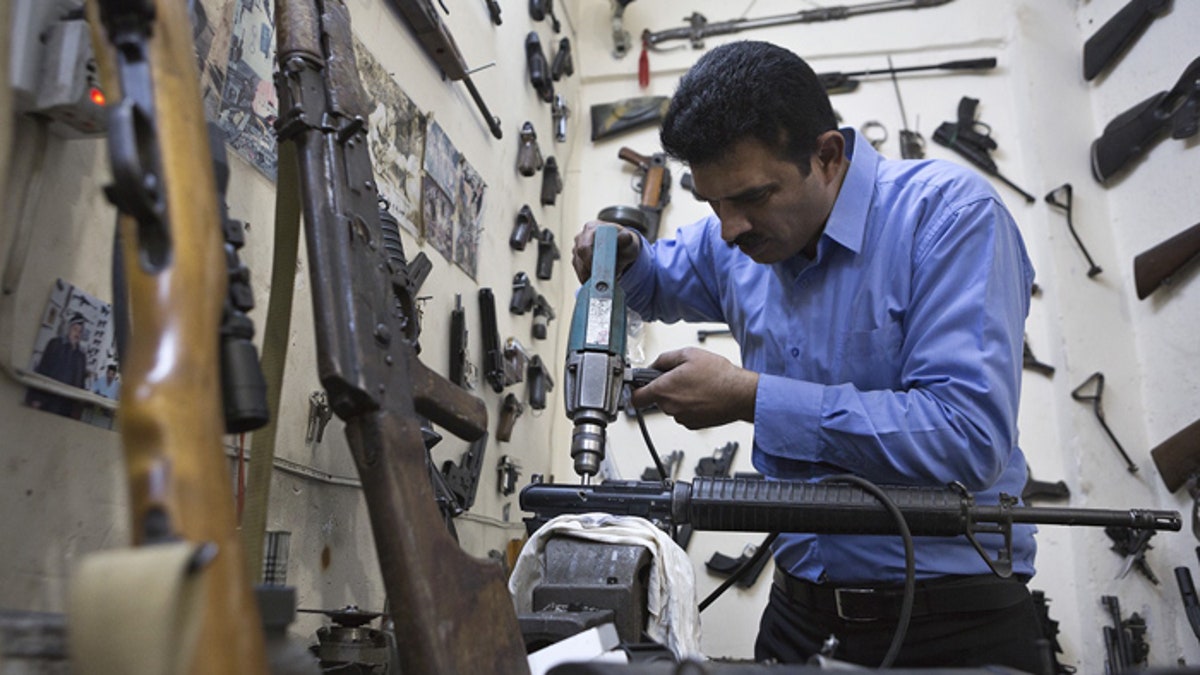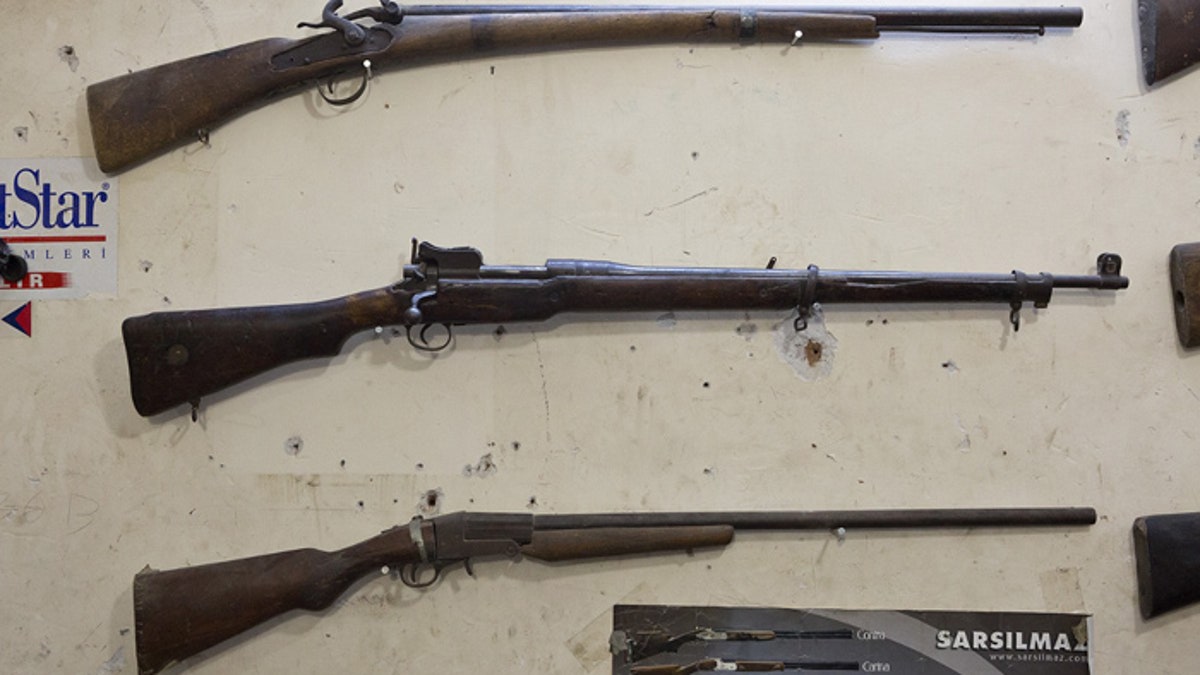
Kurdish gunsmith Bakhtian Aziz learned his trade from his father. (Photo by Matt Cetti-Roberts)
In their fight against ISIS, the Kurdish army known as Peshmerga has a secret weapon – a second-generation gunsmith so skilled he can practically turn a bucket of rusty bolts into a killing machine for the rugged, but cash-strapped, fighting force.
“Weapons always get broken. That’s why I have to repair them.”
Bakhtiar Aziz works in a dimly lit basement shop in Erbil, refurbishing guns taken from the enemy, bringing broken and even decades-old firearms back to life and helping to outfit an army as short on weapons as it is long on heart. On a recent day, he inspected an M-16A4 assault rifle badly damaged in a coalition airstrike. Pocked with holes, missing a large section of the barrel and with human hair wedged in its moving parts, the gun was found by Peshmerga soldiers near the town of Gwer.
Aziz examined it, and told its story.
“The Americans gave it to the Iraqi Army, then when ISIS came, they took it from the Iraqi Army,” Bakhtiar told the military blog War Is Boring. “Now after the American airstrikes against ISIS, the weapon is in the hands of the Peshmerga.”

Aziz’s shop is outfitted simply with a work bench, chair and tools. An arsenal of firearms, including old muskets, line the walls. He learned his trade from his father, who openly repaired weapons for hunters, and secretly fixed them for Kurds who resisted Saddam Hussein. Now, with the Peshmerga battling ISIS along a 600-mile front line, Aziz is putting his skills to work repairing weapons for the fight against the Islamist terror group.
In a region awash with weapons of all makes, models and vintages, Aziz must be able to fix anything that comes his way. ISIS uses mostly Russian weapons, such as the Kalashnikov. But the jihadists have American guns captured from the Iraqi Army, which infamously fled when first confronted by ISIS last year. ISIS is using the weapons against the Peshmerga — who at first only had vintage Warsaw Pact weapons, but now are capturing more firepower in clashes with the terrorists.

The Kurds have a lot of spare parts for Russian-made weapons, but few parts for the American-made M-16 and AR-15 rifles the U.S. introduced into Iraq more than a decade ago.
“The weapons I see the most are Russian,” Aziz said. “They were all made in the 1950s, like the machine guns. Eighty-five percent of the weapons are from Russia.”

Aziz doesn’t merely fix guns, he assembles them using cheap Chinese parts. He recently displayed what looked like an M-4 carbine, but upon closer inspection was a modified M-16, a longer and heavier gun the Peshmerga eschews. Aziz is adept at taking an M-16, changing the stock and hand-guard, and shortening the barrel to make a gun that approximates an M-4.
Aziz proudly displayed a modified Russian PPSh-41 submachine gun, which can spew dozens of bullets in seconds. The weapon’s stamp dates it to 1945, but Aziz modernized it by replacing the folding stock with a pistol grip in front of the drum-barrel magazine and tweaking it to use the 7.62 x 25-mm.Tokarev round. That customized, one-of-a-kind gun is not for sale, and neither is a Simonov SKS carbine with a makeshift telescopic sight.
“I will not sell these, even if someone paid me $10,000,” he said. “I keep them for myself, to decorate the shop.”
As he used a drill to grind away at burrs on a recovered gun, Aziz said his trade will be in demand, even when, he hopes, ISIS is defeated.
“Weapons always get broken,” he said. “That’s why I have to repair them.”
